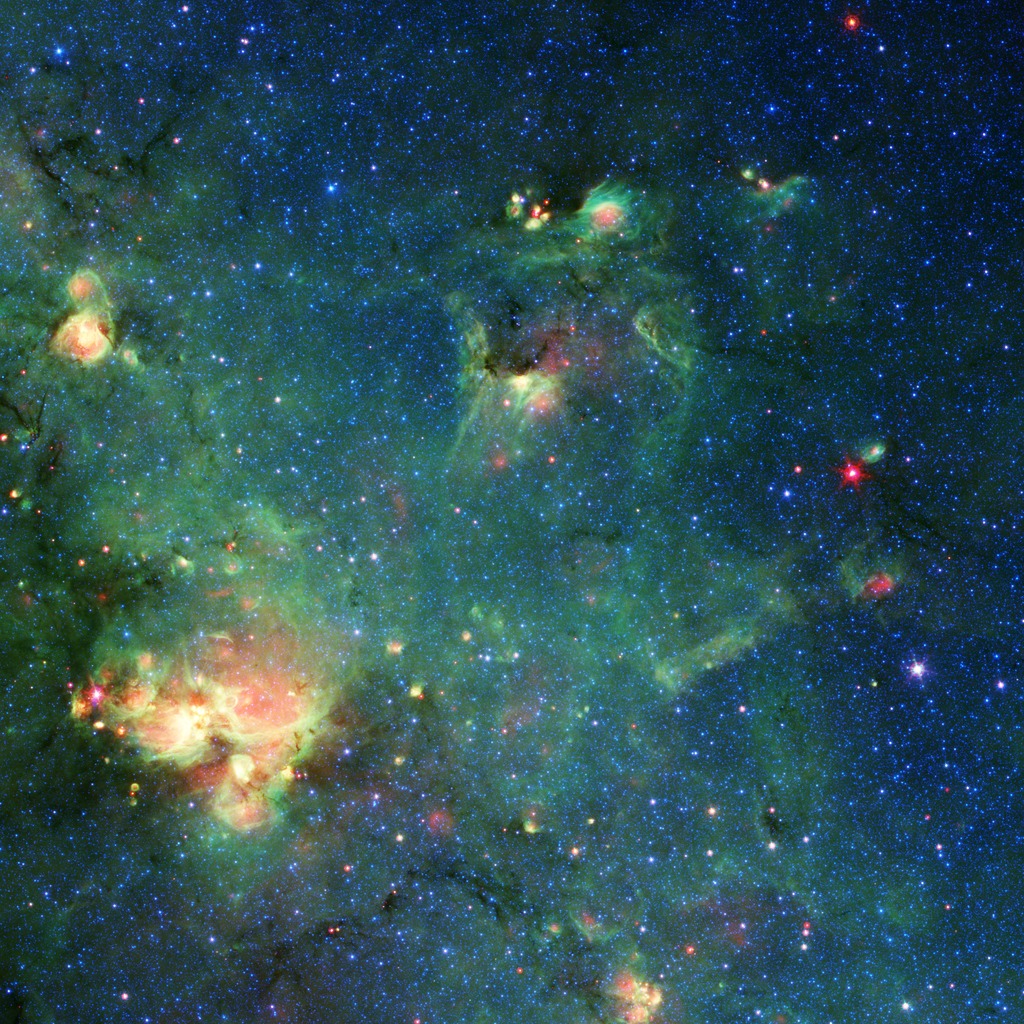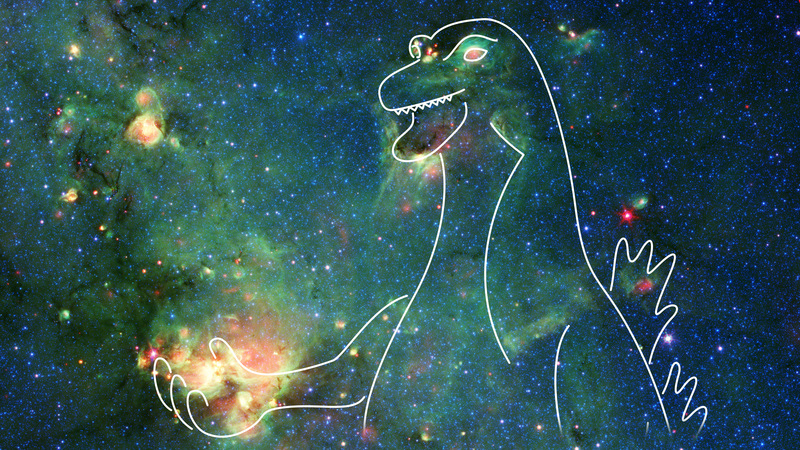
Credit: NASA/JPL-Caltech
Observation • October 25th, 2021 • ssc2021-09a
ssc2021-09a
Do you see a monster in this picture? Do the bright spots near the top of the image look like the piercing eyes and elongated snout of Godzilla?
In reality, this colorful image shows a nebula – a cloud of gas and dust in space – captured by NASA’s Spitzer Space Telescope. Over billions of years, countless stars have formed in the material there. During their lifetimes, the radiation they release carves away the gas and dust, reshaping the cloud. Major changes also occur when massive stars die and explode, becoming supernovae. When viewed in visible light, the kind human eyes can detect, this region is almost entirely obscured by dust clouds. But infrared light (wavelengths longer than what our eyes can perceive) can penetrate the clouds, revealing hidden regions like this one.
Three colors (blue, green, and red) are used to represent different wavelengths of infrared light; yellow and white are combinations of those wavelengths. Blue represents wavelengths primarily emitted by stars; dust and organic molecules called hydrocarbons appear green; and warm dust that’s been heated by stars or supernovae appears red.
The Godzilla-like nebula is located is in the constellation Sagittarius, along the plane of the Milky Way, which was part of Spitzer’s GLIMPSE Survey (short for Galactic Legacy Infrared Mid-Plane Survey Extraordinaire). Stars in the upper right (where this cosmic Godzilla’s eyes and snout would be) are an unknown distance from Earth but within our galaxy. Located about 7,800 light-years from Earth, the bright region in the lower left (Godzilla’s right hand) is known as W33.
About the Object
- Name
- W33
- Type
- Nebula > Type > Star Formation
- Distance
- 7,800 Light Years
Color Mapping
| Band | Wavelength | Telescope |
| Infrared | 3.6 µm | Spitzer IRAC |
| Infrared | 8.0 µm | Spitzer IRAC |
| Infrared | 24.0 µm | Spitzer MIPS |
Astrometrics
- Position (J2000)
- RA =18h 12m 28.0s
- Dec = -17° 50' 12.8"
- Field of View
- 1.2 x 1.2 degrees
- Orientation
- North is 20.3° left of vertical





